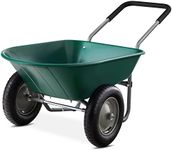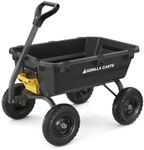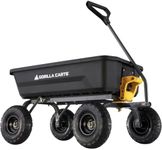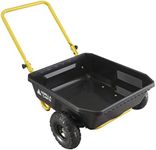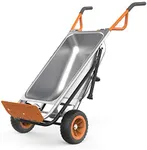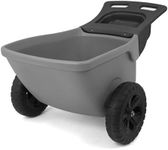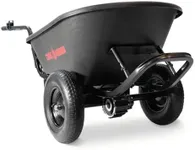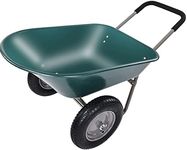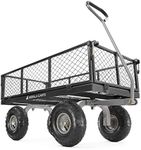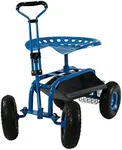Buying Guide for the Best Lightweight Wheelbarrows
Choosing the right lightweight wheelbarrow can make your gardening, landscaping, or construction tasks much easier and more efficient. A lightweight wheelbarrow is designed to be easy to maneuver and handle, reducing the physical strain on the user. When selecting a wheelbarrow, it's important to consider several key specifications to ensure it meets your specific needs and preferences.MaterialThe material of the wheelbarrow is crucial as it affects both the weight and durability. Common materials include plastic, steel, and aluminum. Plastic wheelbarrows are the lightest and resistant to rust, making them ideal for light gardening tasks. Steel wheelbarrows are more durable and can handle heavier loads but are heavier themselves. Aluminum offers a good balance between weight and durability. Choose a material based on the type of tasks you will be performing and the weight you are comfortable handling.
CapacityCapacity refers to the volume and weight the wheelbarrow can carry. It is usually measured in cubic feet for volume and pounds for weight. Smaller wheelbarrows (around 4-6 cubic feet) are suitable for light gardening and household tasks. Medium-sized wheelbarrows (6-8 cubic feet) are versatile and can handle a variety of tasks, while larger ones (8+ cubic feet) are best for heavy-duty work. Consider the typical load you will be transporting to choose the right capacity for your needs.
Number of WheelsWheelbarrows can have one, two, or even four wheels. A single-wheel design offers better maneuverability and is easier to tip for dumping, but it requires more balance and control. Two-wheel designs provide more stability and are easier to push, making them ideal for heavier loads or uneven terrain. Four-wheel designs are the most stable and require the least effort to move, but they are less maneuverable. Choose the number of wheels based on the terrain you will be working on and your ability to balance the load.
Handle DesignThe handle design affects the comfort and ease of use. Traditional straight handles offer good control and are suitable for lifting and dumping. Ergonomic handles, which are often curved or padded, provide better comfort and reduce strain on your hands and wrists. Some wheelbarrows also feature loop handles, which allow for easier pushing and pulling. Consider how long you will be using the wheelbarrow and choose a handle design that offers the best comfort and control for your needs.
Tire TypeThe type of tire can impact the wheelbarrow's performance on different terrains. Pneumatic tires are filled with air and provide a smooth ride over rough or uneven surfaces, but they can puncture and require maintenance. Solid rubber tires are puncture-proof and require no maintenance, but they don't absorb shocks as well. Foam-filled tires offer a compromise, providing some cushioning without the risk of punctures. Choose a tire type based on the terrain you will be working on and your preference for maintenance.
